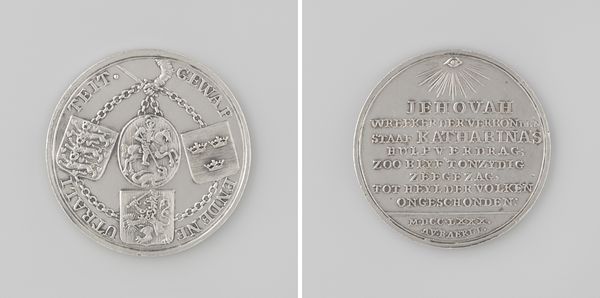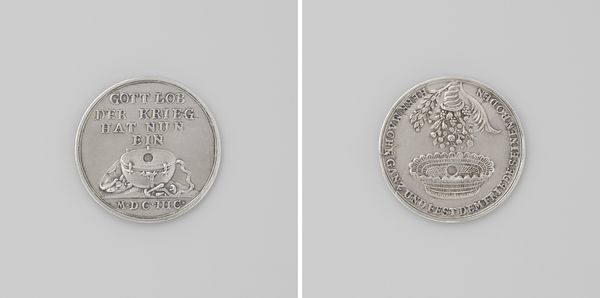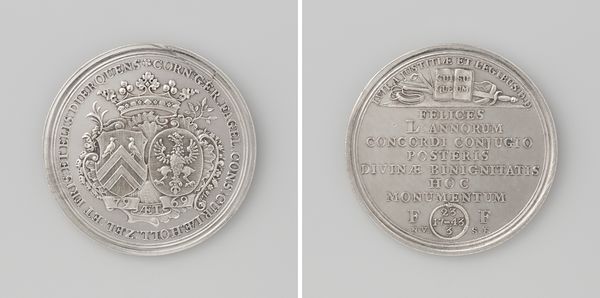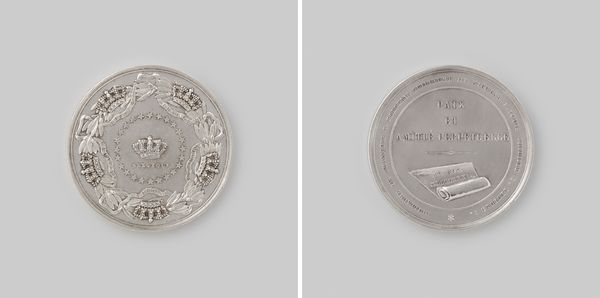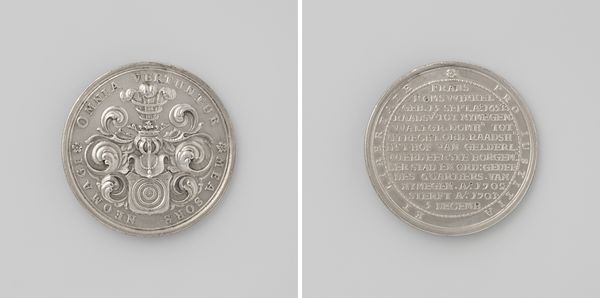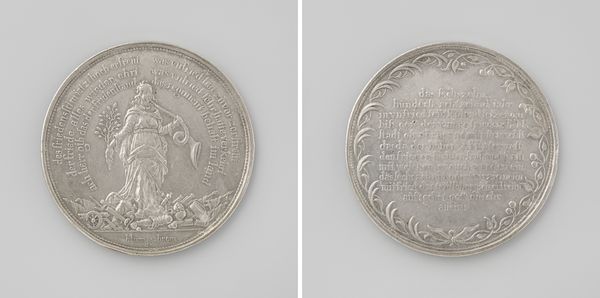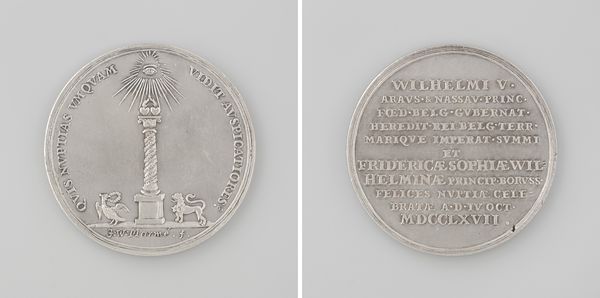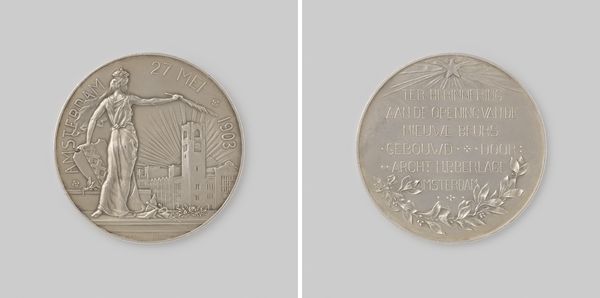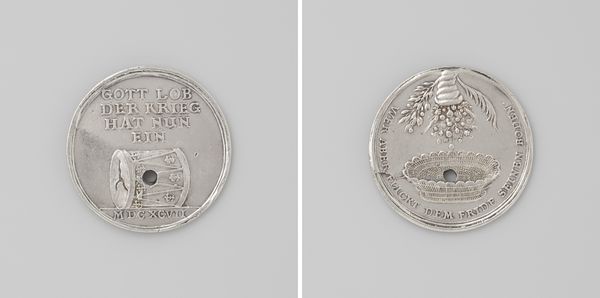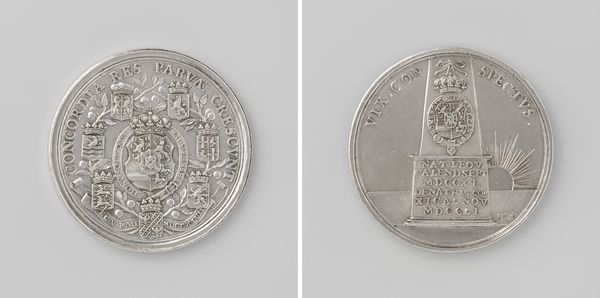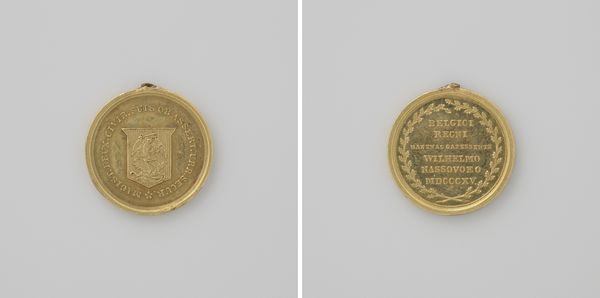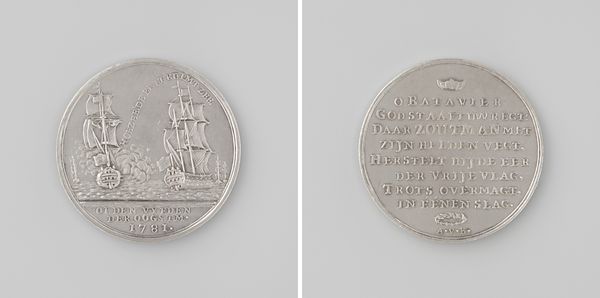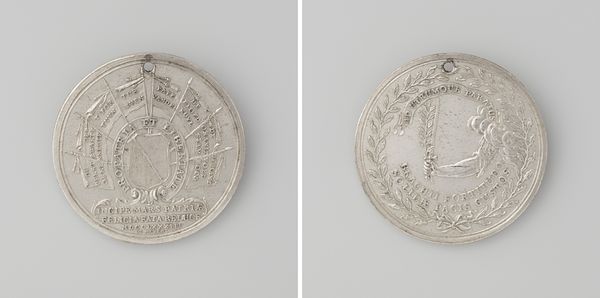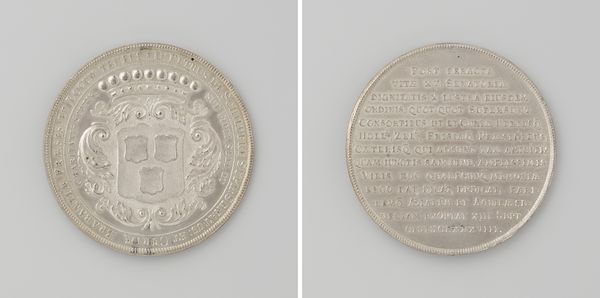
Oprichting van een monument in Den Hout bij Haarlem door burgemeesters en raad, ter ere van het vierde eeuwfeest van de uitvinding van de boekdrukkunst 1823
0:00
0:00
metal, relief, sculpture
#
portrait
#
neoclacissism
#
metal
#
relief
#
sculpture
#
history-painting
Dimensions: diameter 3.5 cm, weight 133 gr
Copyright: Rijks Museum: Open Domain
Curator: What a fascinating piece! This medal, crafted in 1823 by Vries & Zoon, commemorates the erection of a monument in Den Hout near Haarlem. It was dedicated by the mayors and council to honor the fourth centenary of the invention of printing. Editor: It certainly possesses a neoclassical serenity. The crisp, almost austere, rendering of the monument has a cooling effect. It’s small, understated; more of a quiet statement than a bombastic proclamation. Curator: The very act of memorializing a specific technology speaks volumes, doesn't it? It’s not just about honoring an individual, Laurens Jansz. Coster, claimed here as the inventor, but acknowledging printing’s transformative power on society. Consider how such technologies have historically shifted power, created access, and altered social fabrics. Who was able to use printing and toward which ends? These medals circulate and create social narratives. Editor: Absolutely. The medal serves as a tool for public remembrance, framing history through the lens of civic pride. This event would have solidified the Dutch narrative around innovation and progress, crucial in the wake of significant political upheavals in Europe. Note the laurel wreaths. A celebration! The civic leaders wanted the populace to understand their deep historical debt to this local, national technological advance. Curator: Exactly! And beyond that specific moment, this also signals a crucial shift. Commemoration like this can influence cultural memory itself. This isn't a depiction of war or monarchy but one focused on literacy, accessibility... in a way. So while we might appreciate the formal qualities and the clear neoclassical lines, we also need to question whose history gets told and in what forms? Who benefits when figures like Coster are centered within these discussions? What voices, what possibilities were muted when narratives like these take hold? Editor: It is definitely not a neutral object. But perhaps now, by questioning that selective memory, we might invite even richer narratives, revealing a more inclusive portrait of the time. It forces me to consider public roles of such small sculptures today. Curator: I agree completely. Looking critically at objects like these medals is more necessary than ever!
Comments
No comments
Be the first to comment and join the conversation on the ultimate creative platform.
